
ULTRA SONIC BONDING
A bonding method that enables rigid metal bonding without melting joining materials.
Lead-free and solderless / No use of lead or lead-free solder / Reduced production costs / No use of shield gas, etc. / Environmentally friendly / Clean → No harmful substances / Energy saving → No use of excessive resources
There are a broad range of problems with existing bonding methods.
(E.g. resistance welding, laser welding, brazing/solder, etc...)
ProblemOccurrence of sputter, etc.
ImpactDefects caused by foreign matter, etc.
ProblemComposition change due to melting, alloy formation
ImpactMaterial property changes (mechanical and electrical)
ProblemOccurrence of blowholes
ImpactLow bond strength (varying strength)
Problem
Use of flux and shielding gas
Use of inclusions such as solder
Impact
High production equipment costs and high power consumption
Environmental problems due to the use of hazardous substances
Ultrasonic bonding is a solid phase bonding method that does not melt metal workpieces.
Major Characteristics
Impact
Bonding is possible without changing the mechanical and electrical properties
Existing methods

In existing methods, an alloy layer is generated during welding as shown in the figure above, and the mechanical and electrical characteristics change
Ultrasonic bonding
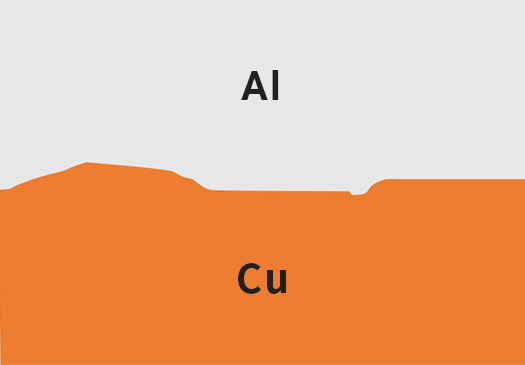
Ultrasonic bonding cross section (Al + Cu)
The following is an introduction to the composition and mechanism of ultrasonic complex vibration.
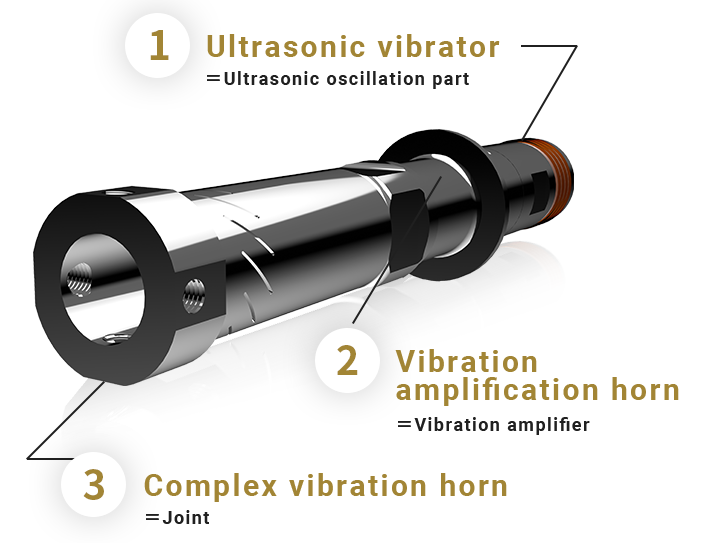
MECHANISM
1
Occurrence
Vibration occurs by applying voltage to the vibrator.
MECHANISM
2
Amplification
Amplification horn amplifies the vibrations generated.
MECHANISM
3
Bond
The diagonal slits convert part of the linear vibration into a torsional vibration and adds it to generate circular or elliptical vibration, and then transmits this complex vibration to the workpiece and joins it.
The following is an explanation of the ultrasonic bonding process.
01
Vibration and excitation
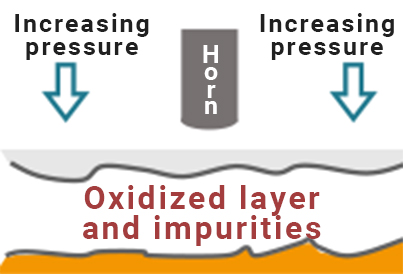
With pressure exerted, ultrasonic vibration is applied
02
Contact
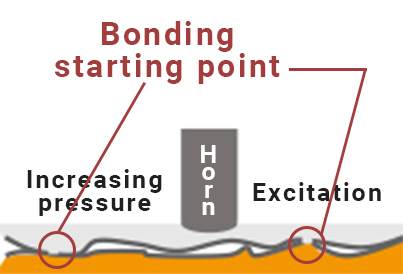
Friction/plastic flow removes surface oxidized layer and impurities and materials make contact with each other
03
Deformation
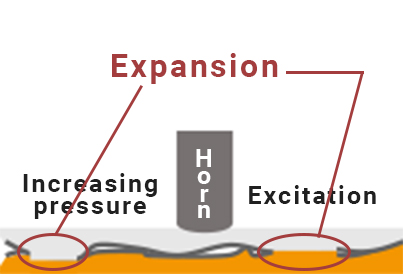
The material deforms around the contact area and the contact area is expanded
04
Bonding

The material as a whole bonds together to form a strong joint